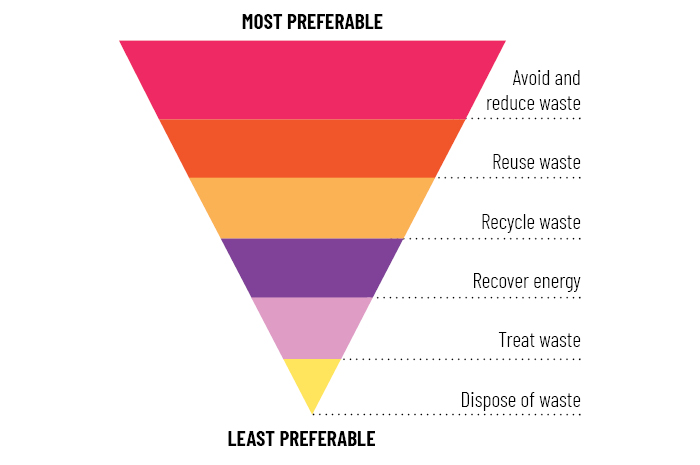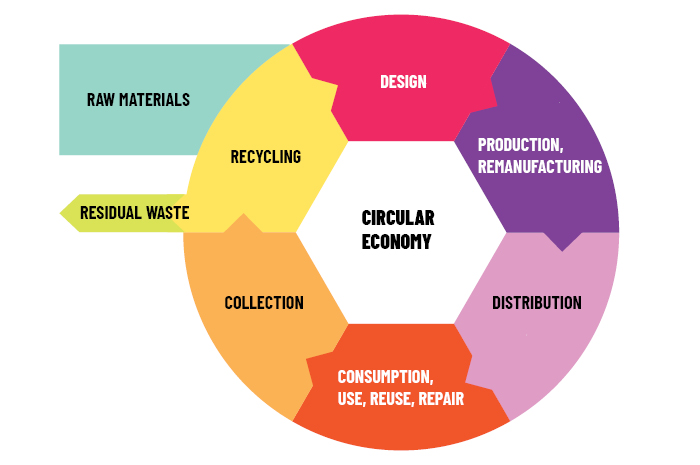The waste hierarchy and circular economy
The waste hierarchy and circular economy are two important concepts that underpin the actions in our Waste and Resource Education Strategy 2021-24. These concepts are are explained below.
The waste hierarchy
The waste hierarchy prioritises the various options available from managing waste, based on the most efficient use of resources and their associated environmental impacts. This concept is a key component of waste policy at all levels of government - but importantly, it can also be easily applied at home.

Avoidance - including action reduce the amount of waste generated by households, industry and all levels of government.
Resource Recovery - including reuse, recycling, reprocessing and energy recovery consistent with the most efficient use of the recovered resource.
Disposal - including management of all disposal options in the most environmentally responsible manner.
The circular economy
The circular economy aims to move away from the current practice of 'take-make-dispose' (the linear economy), and instead values the resources we have available to us.

- The circular economy aims to use products for as long and as much as possible, and change that way that products are manufactured, assembled, sold and used to minimise waste generation and environmental impacts.
- Your kerbside bins are an example of the circular economy in action, with recyclables and garden organics collected and valued as a resource to be manufactured (for your recycling bin) and composted (for your garden organics bin) into new products.
This is the reason why what goes in your bins is so important - if the wrong things go in, the right things in your bin will go to waste, and won't be made into new products.
So please give it some thought before you bin your waste, it really does make a difference.